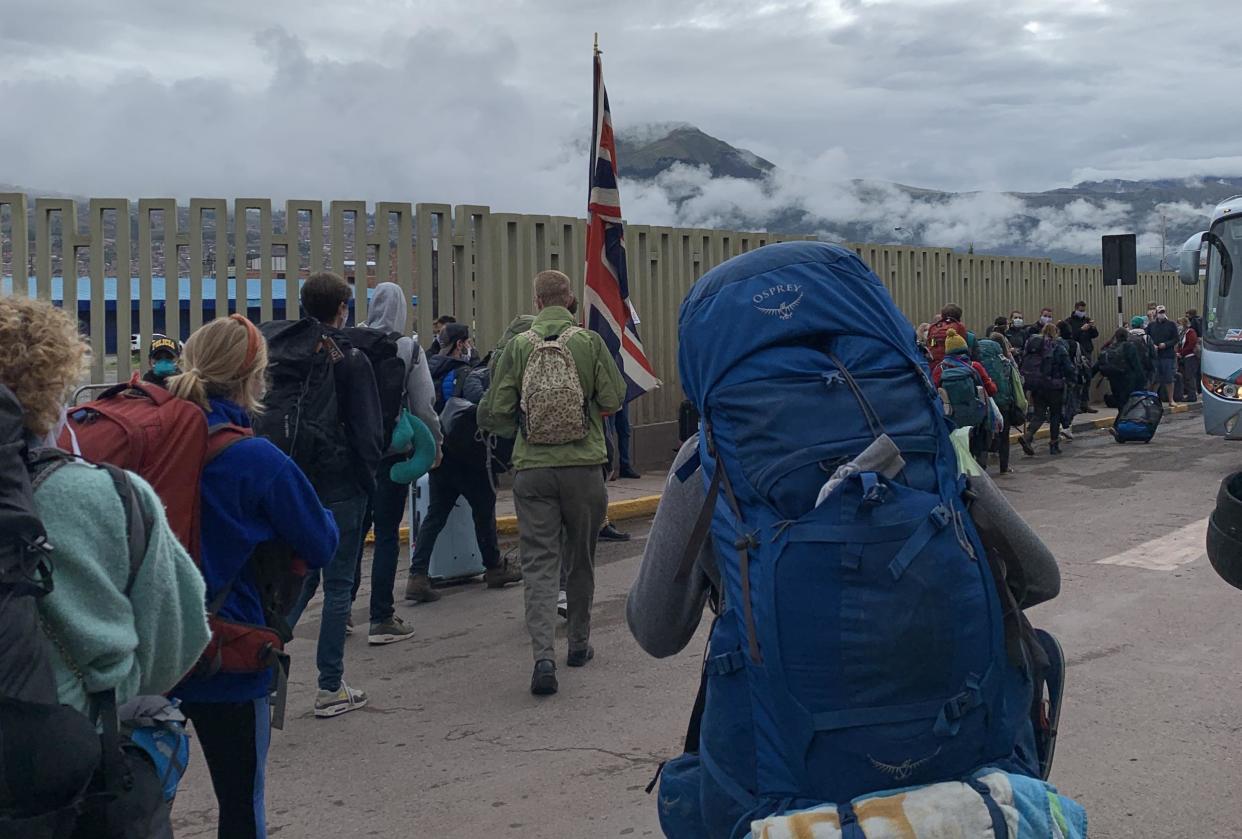Coronavirus travel: How will government plan to bring stranded Britons home work?

These are the key questions, answers and Independent predictions about the government’s plans for a £75m airlift of British nationals stranded abroad due to the global coronavirus shutdown.
What has the foreign secretary said?
Speaking at the daily 10 Downing Street briefing, Dominic Raab said: “An unprecedented number of British travellers are trying to get home. Critical transit hubs are shutting down or limiting their flights.”
The government will be reminding airlines of their obligation under European air passengers’ rights rules to find seats on alternative carriers when they cancel a flight.
But many travellers are facing a brick wall as a result of a surge of flight bans, airline groundings and restrictions on transit. Shutdowns at airport such as Dubai and Singapore have wrecked the travel plans of many UK citizens.
“Where commercial flights are no longer running, the government will provide special charter flights,” Mr Raab said.
How many British travellers are stuck abroad?
The repatriation exercise is aimed at UK citizens on short-term trips abroad – whether holidaymakers, business travellers or people visiting friends and relations.
The Independent has calculated that around 50,000 British travellers are still in this position. But Mr Raab estimated “hundreds of thousands” of UK citizens are still abroad and wanting to come home.
The difference may be explained by a growing number of long-term British residents abroad who are deciding to move back to the UK to be closer to family at this time.
What flights have taken place so far?
Early on in the coronavirus crisis, two repatriation flights were organised from Wuhan – the Chinese city at the centre of the outbreak – and one from Tokyo, carrying 43 passengers from the stricken cruise ship, Diamond Princess.
Since then the only coordinated rescue effort has been to Peru, where an estimated 1,000 travellers are being brought back in a series of four British Airways flights – together with connecting flights and buses from cities across the South American country.
The Independent understands that another “pilot repatriation” took place at the weekend from Accra in Ghana.
Should there have been more flights by now?
Many people – whether UK citizens abroad or their loved ones at home – say the government has acted too slowly. The inaction means that more and more travellers have got stuck on the wrong side of lockdowns and flight bans.
Anger has grown among stranded British travellers, their families and their constituency MPs at what they see as a sluggish response to what is rapidly becoming a humanitarian crisis.
Austria, Germany, Israel and the US have organised a series of repatriation flights from distant locations such as Auckland and Santiago de Chile.
How will the repatriation system work?
Details are sketchy, but the government says passengers will be able to book online with a travel management company. Travellers are being urged to register with the Foreign Office and/or UK missions abroad to hear about the opportunities.
They will pay a nominal amount. For long-haul flights it is likely to be £250, the sum charged to British passengers brought back from Peru. The actual cost per seat is likely to be four to six times as much; the remainder will be met by the taxpayer.
Where and when will it start?
The first wave of charters is being negotiated but there are no definitive answers about dates and destinations for rescue flights. The Independent understands priority will be given to locations with high concentrations of travellers, particularly in India and South Africa.
South Africa imposed a flights ban at the weekend at very short notice.
India’s draconian new rules and a ban on international flights has left an estimated 10,000 British travellers without an obvious escape route.
There will also be special attention paid to places where there are known to be many vulnerable UK citizens – including older travellers, those with underlying medical conditions and people with an especially urgent need to get home.
The quality of the local healthcare system will also be taken into account.
Large concentrations of increasingly anxious British travellers are located across Asia, particularly in Cambodia, the Philippines and the Indonesian island of Bali.
More UK travellers are spread across Pacific islands as well as Latin America.
But British citizens in Australia and New Zealand cannot expect immediate help. Commercial flights from key Australian cities are continuing, with some Qatar Airways flights serving Auckland in New Zealand.
Who will do the flying?
Mr Raab said that five UK airlines have signed a memorandum of understanding: British Airways, Virgin Atlantic, easyJet, Jet2 and Titan Airways. All but the first two are short-haul airlines, with limited capability to help.
With almost no other income, airlines are believed to be keen to get involved with repatriation. But some previous repatriation flights have been operated by the Spanish charter airline, Wamos.
But as individual countries have imposed increasingly harsh lockdown as well as flight bans, key hotspots have become apparent.
Where will the repatriation flights land in the UK?
The vast majority of long-haul flights will be to London Heathrow, but some will serve Gatwick. If a large number of travellers are heading for northern England, north Wales and Scotland, for example from India, then some flights may serve Manchester airport – to reduce the amount of travel in the UK.
Will there be special screening at the arrival airport?
No, it will be nothing like the early repatriation flights from China and Japan, where travellers were taken to isolation hospitals. Arriving passengers will be given information about coronavirus and told what to do if they develop symptoms.
Read more
When can we really expect coronavirus to end?
Everything you need to know on supermarket delivery slots
The dirty truth about washing your hands
Which countries around the world has coronavirus spread to?
Listen to the latest episode of The Independent Coronavirus Podcast


